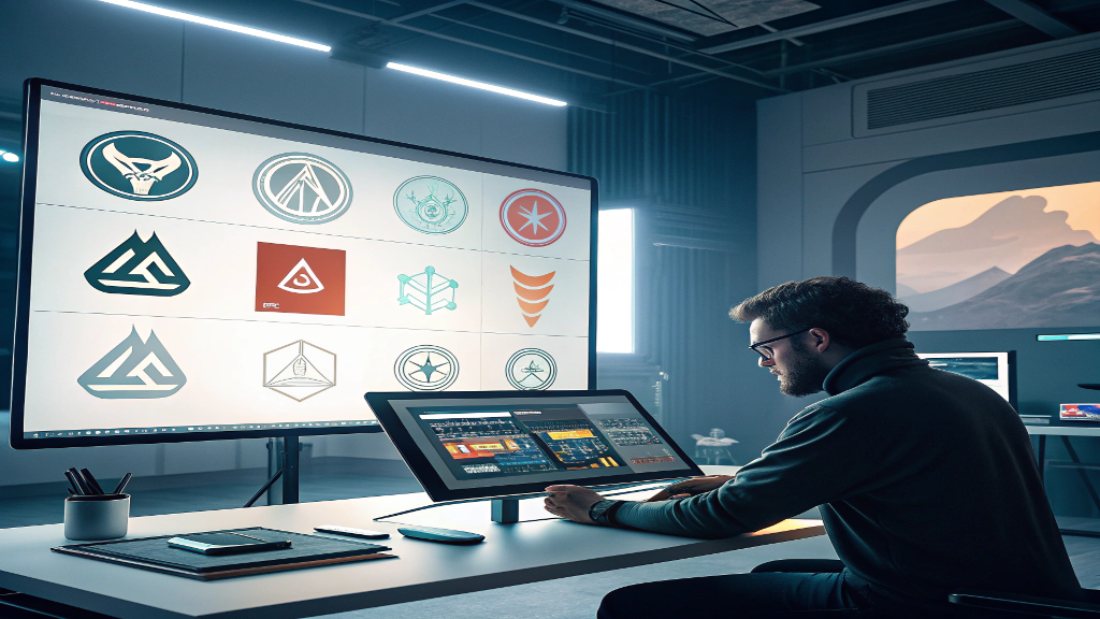In the fast-changing world of design, the rise of AI in logo design tools has stirred up a mix of excitement and concern among designers. While these tools offer a promise of efficiency and creativity, they also bring up important questions about the place of human designers in the creative journey. This article takes a closer look at how AI is influencing logo design, exploring its advantages, drawbacks, and what the future holds for design in a world increasingly shaped by AI.
AI logo design tools are reshaping the creative world, offering speed and innovation while raising questions about the human touch. Explore more about our design services at Creador Designs to see how we blend technology with creativity. This article explores the rise of AI in logo design and its impact on the future of branding.
Understanding AI in Logo Design
AI logo design involves using artificial intelligence algorithms to craft logos based on user inputs like company name, industry, and design preferences. These tools tap into machine learning and extensive databases of design elements to whip up unique logo concepts in just seconds.
Popular AI Logo Design Tools
A variety of platforms have popped up, providing AI in graphic design and AI-driven logo creation:
- LogoMakr: An easy-to-use tool that lets users design logos by picking icons and fonts.
- Looka: Delivers customizable logo designs tailored to user preferences.
- Designhill: Offers a marketplace for custom logos crafted by both AI and human designers.
- Brandmark: Uses AI to create logos and brand identities.
- Logo.com: Features AI-generated logos that emphasize simplicity and scalability.
- ChatGPT: While mainly a text-based AI, it can help brainstorm and refine logo ideas.
- Hatchful: A free tool from Shopify that generates logos based on user inputs.
- Tailor Brands: Merges AI with human design elements to produce logos.
- Canva: Renowned for its design flexibility, Canva also provides AI-assisted logo creation.
- Visual Electric: Delivers AI-generated logos with a focus on contemporary aesthetics.

The Perks of Using AI in Logo Design
AI logo design tools offer multiple advantages:
- Speed and Efficiency
AI tools can whip up a bunch of logo ideas in just seconds, reducing the time needed for the initial design stage. - Budget-Friendly
For startups and small businesses, AI-generated logos provide a cost-effective option compared to hiring professional designers. - Easy Access
These tools make design accessible to everyone, allowing those without formal training to create logos that look professional. - Spark for Ideas
AI can offer a wide range of design possibilities, acting as a wellspring of inspiration for both designers and clients.
The Drawbacks of AI in Logo Design
Despite the perks, AI logo design also has limitations:
- Missing Human Creativity
AI can churn out designs based on patterns, but it lacks the human flair that adds originality and emotional depth. - Cookie-Cutter Designs
AI tools often depend on templates, resulting in logos that feel generic and might resemble others. - Limited Insight into Brand Identity
AI might not fully capture the subtleties of a brand’s culture and values, leading to designs that don’t fit perfectly. - Over-Reliance on Technology
Excessive dependence on AI can dampen human creativity and innovation in the design process.
AI and Human Designers: A Team Effort
Instead of seeing AI as a competitor, it can be viewed as a helpful tool that enhances the design journey. Designers can use AI for initial ideas and then apply their skills to refine and personalize those designs, ensuring they resonate with the brand’s identity.
The Future of Logo Design
The role of AI branding tools in logo design is set to expand, but human designers will still play a vital role. A blended approach is emerging:
- AI handles repetitive tasks and generates initial concepts.
- Human designers focus on creativity, strategy, and aligning designs with the brand.
This collaboration ensures logos are both efficient to create and meaningful in representation.
Conclusion
AI logo design tools offer numerous benefits, including efficiency, cost-effectiveness, and accessibility. However, they also have limitations in areas requiring human creativity and brand understanding. By adopting a collaborative approach, designers can harness the strengths of both AI and human expertise, ensuring the creation of logos that are visually appealing and deeply connected to the brand’s identity.
The role of AI in logo design is set to expand, but human designers will still play a vital role. For further insights into the impact of AI on graphic design, visit How AI Is Transforming Graphic Design in 2025.

